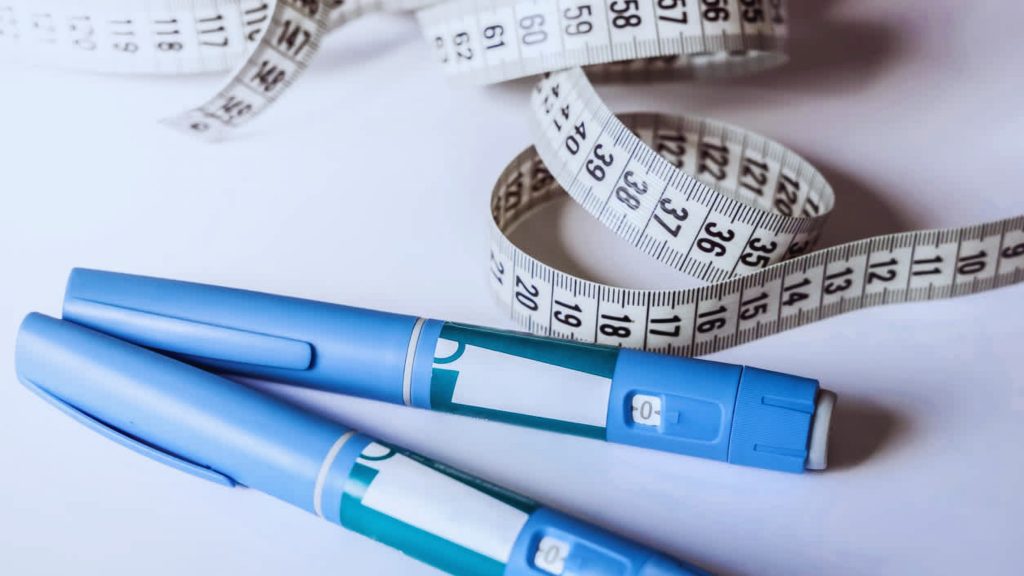Exercise
Ozempic and Exercise: How to Maintain Muscle on Ozempic
Table of Contents
Originally developed for type 2 diabetes, Ozempic has gained massive popularity for its off-label use in weight loss. While Ozempic for weight loss has proven effective, rapid weight reduction comes with concerns – one of the biggest being muscle loss.
Since muscle plays a vital role in metabolism, strength, and overall health, maintaining it is essential. So, how can you preserve muscle while using Ozempic?
Here, we’ll dive into how Ozempic and exercise work together, the risks of muscle loss, and practical strategies to maintain muscle mass while losing weight.
Why Maintaining Muscle on Ozempic Matters
Maintaining muscle mass plays a crucial role in strength, metabolism, mobility, and overall health. Losing too much muscle can lead to weakness, fatigue, joint problems, and difficulty performing daily activities. Since Ozempic for weight loss can lead to rapid fat loss, ensuring muscle retention is essential.
- Enhances Strength and Endurance: Strong muscles allow you to perform daily tasks like lifting groceries, carrying laundry, or getting up from a chair with ease. Without enough muscle, these simple activities can become more difficult, leading to decreased independence over time.
- Reduces Fatigue: Muscle plays a key role in physical endurance. When you have more muscle, your body requires less effort to move, reducing the likelihood of feeling exhausted after walking, climbing stairs, or doing household chores.
- Increases Caloric Burn: Muscle is metabolically active tissue, meaning it burns more calories than fat—even when you’re resting. This is especially important when taking Ozempic for weight loss, as retaining muscle helps prevent metabolism from slowing down too much as you shed pounds.
- Supports Healthy Body Composition: Losing muscle instead of fat can result in a “skinny fat” appearance, where the body has a higher fat-to-muscle ratio. Maintaining muscle ensures that weight loss leads to a toned, strong physique rather than just a lower number on the scale.
- Enhances Bone Density: Muscle and bone health are directly connected. Strength training stimulates bone growth, reducing the risk of osteoporosis, fractures, and bone loss, especially as you age. This is crucial for long-term mobility and independence.
- Protects Joints: Muscles act as natural shock absorbers, helping to stabilize and support joints. This reduces stress on the knees, hips, and back, decreasing pain and lowering the risk of joint injuries. Without enough muscle, joints take on more strain, which can lead to discomfort and mobility issues.
- Improves Balance and Stability: Strong muscles, particularly in the core and legs, help maintain balance and coordination, reducing the likelihood of falls and injuries. This is particularly important as you age or if you experience weight loss that affects muscle strength.
- Increases Reaction Speed: Muscles play a role in quick reflexes and coordinated movement. When you maintain muscle mass, your body reacts faster to potential slips, trips, or sudden movements, helping you avoid accidents and injuries.
How to Maintain Muscle While Taking Ozempic

Losing weight with Ozempic for weight loss can be effective, but without the right approach, you might also lose muscle in the process. Here’s how to maintain muscle while using Ozempic:
1. Prioritize Resistance Training
Strength training is one of the most effective ways to preserve and build muscle, especially while losing weight. Aim for at least two to three resistance workouts per week to keep your muscles engaged and strong.
- Use Free Weights: Dumbbells, kettlebells, and resistance bands force your muscles to stabilize and engage multiple muscle groups, leading to better strength and endurance.
- Focus on Compound Movements: Exercises like squats, lunges, deadlifts, and bench presses work multiple muscle groups at once, helping you maintain strength efficiently. These movements also help with functional fitness, making everyday activities easier.
- Incorporate Bodyweight Exercises: Moves like push-ups, pull-ups, dips, and planks help maintain strength even without gym equipment. These exercises also improve stability and endurance.
- Increase Resistance Over Time: Muscles need progressive overload to grow. Gradually increase the weight, resistance, or intensity of your workouts to keep challenging your muscles and prevent muscle loss.
2. Consume Enough Protein
Protein is essential for muscle repair, recovery, and maintenance. Since Ozempic reduces appetite, it’s important to be intentional about prioritizing high-protein foods in your diet.
- Lean Meats: Chicken, turkey, and fish provide high-quality protein with low fat, making them excellent choices for muscle maintenance.
- Eggs and Dairy: Foods like Greek yogurt, cottage cheese, and eggs are packed with protein and essential nutrients like calcium, which also support muscle function.
- Plant-Based Options: If you follow a vegetarian or vegan diet, lentils, chickpeas, quinoa, tofu, and tempeh are great plant-based protein sources that support muscle health.
- Protein Supplements: If you’re struggling to meet your protein needs due to a suppressed appetite from Ozempic, consider protein shakes or powders to make it easier to reach your daily intake goals.
3. Stay Hydrated
Hydration plays a crucial role in muscle function, recovery, and overall performance. Aim for at least half your body weight in ounces of water daily to keep your muscles working optimally.
- Prevents Muscle Cramps: Dehydration can lead to painful muscle cramps and stiffness, making it harder to stick to your workout routine.
- Aids in Recovery: Water helps flush out toxins, transport nutrients to muscles, and prevent soreness, ensuring faster recovery after workouts.
- Maintains Energy Levels: Proper hydration supports circulation, digestion, and muscle contractions, keeping your body functioning efficiently and preventing fatigue.
4. Monitor Your Progress
Keeping track of your muscle mass and strength levels ensures that you’re losing fat, not muscle while taking Ozempic.
- Measure Body Composition: Use a body composition scale or a DEXA scan to monitor changes in muscle mass, body fat percentage, and overall weight loss.
- Check Your Strength Levels: If you notice that you’re struggling to lift the same weights or perform bodyweight exercises, it may be a sign that you need to increase your protein intake or adjust your resistance training routine.
- Monitor Energy and Endurance: Feeling weaker or more fatigued than usual could indicate muscle loss. If this happens, reassess your exercise routine, protein intake, and hydration levels to maintain your strength.
Best Exercises for People on Ozempic
A well-rounded workout routine is essential for preserving muscle mass and maintaining overall fitness while using Ozempic. Since using Ozempic pens for weight loss can lead to a decrease in both fat and muscle, incorporating the right exercises helps ensure that you’re losing fat while keeping your muscles strong.
Strength Training Exercises
Strength training is crucial for maintaining muscle mass, improving strength, and supporting metabolism while taking Ozempic. Focus on compound movements that target multiple muscle groups for the best results.
- Dumbbell Squats: Squats work the legs, glutes, and core, helping to build lower body strength and improve balance. Using dumbbells adds resistance, increasing muscle activation and calorie burn.
- Deadlifts: This full-body movement strengthens the hamstrings, glutes, core, and lower back while improving posture and stability. It also helps with functional strength, making everyday movements like lifting and bending easier.
- Push-Ups: Engaging the chest, shoulders, arms, and core, push-ups are an effective bodyweight exercise that helps maintain upper body strength without requiring equipment. Modifying the movement by doing incline or knee push-ups can make it more accessible.
- Planks: Strengthening the core, shoulders, and back, planks improve stability and support better posture. Holding a plank for longer durations challenges endurance and engages deep core muscles for improved strength.
Low-Impact Cardio Options
Low-impact cardio is a great way to boost cardiovascular health, improve endurance, and burn calories without putting excessive strain on the joints. This is particularly beneficial for individuals experiencing weight loss-related muscle loss or fatigue.
- Cycling: Riding a stationary or outdoor bike strengthens the legs and glutes while providing an effective cardiovascular workout. It’s easier on the joints than high-impact activities like running, making it an excellent choice for those on Ozempic.
- Yoga: Incorporating yoga helps enhance flexibility, balance, and core strength while promoting relaxation and stress relief. It also improves muscle endurance by focusing on controlled movements and deep stretches.
- Pilates: This form of exercise focuses on muscle tone, stability, and core strength while using controlled, low-impact movements. Pilates helps build lean muscle without excessive strain, making it a good complement to strength training.
- Walking: A simple yet highly effective way to stay active and burn calories, walking helps maintain cardiovascular health without the risk of muscle strain. Brisk walking can also strengthen the legs and improve endurance over time.
Balancing Strength Training and Cardio
Finding the right balance between resistance training and low-impact cardio is key to preserving muscle and promoting fat loss while taking Ozempic. A structured routine that includes two to three days of strength training and three to five days of low-impact cardio can help maintain muscle strength, endurance, and overall fitness while supporting sustainable weight loss.
Stay Strong and Take Control of Your Health Today
Maintaining muscle while taking Ozempic is all about balance: consistent strength training, proper nutrition, and staying active. Whether you’re using Ozempic for weight loss or diabetes management, prioritizing muscle health will keep you feeling strong and energized.
Looking for a reliable way to buy Ozempic online in Canada? Skinny Pens makes it easy! We offer authentic, high-quality Ozempic sourced from factory. Visit Skinny Pens today for a secure and hassle-free experience.
Frequently Asked Questions
Can you build muscle while taking Ozempic?
Yes! While Ozempic can suppress appetite, strength training and proper protein intake help maintain and even build muscle. Incorporating resistance exercises like squats, deadlifts, and push-ups stimulates muscle growth. Additionally, progressive overload (gradually increasing weights or resistance) ensures continued strength gains.
How much protein should I eat while on Ozempic?
To preserve muscle and support recovery, aim for 0.6 to 1 gram of protein per pound of body weight daily. Since Ozempic for weight loss can reduce appetite, focus on lean meats, eggs, dairy, legumes, and protein shakes to meet protein needs. Distributing protein intake across meals helps with absorption and muscle maintenance.
What are the best workouts while on Ozempic?
A combination of strength training and low-impact cardio is ideal for maintaining muscle while on Ozempic. Strength training (at least twice a week) using compound exercises like squats, push-ups, and planks preserves muscle. Low-impact cardio like cycling, walking, and yoga improves endurance without excessive strain on the joints. Pairing Ozempic and exercise helps maintain strength while promoting a balanced and sustainable fitness routine.
How can I tell if I’m losing too much muscle?
Signs of excessive muscle loss include decreased strength, persistent fatigue, and difficulty with daily activities like lifting objects or climbing stairs. If you notice weaker performance in workouts or reduced endurance, it may indicate muscle loss. Tracking body composition with a scale or strength levels in resistance training helps monitor changes. Adjusting protein intake and exercise routines can help prevent further muscle reduction.

